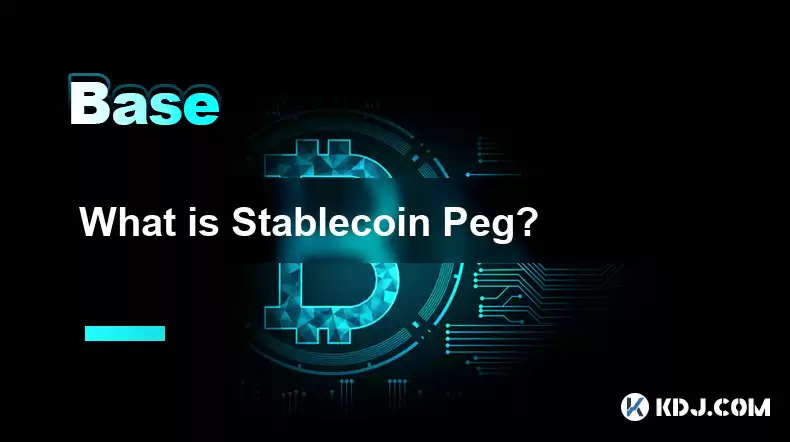-
 Bitcoin
Bitcoin $117700
-0.03% -
 Ethereum
Ethereum $3805
0.49% -
 XRP
XRP $3.098
-1.00% -
 Tether USDt
Tether USDt $1.000
0.03% -
 BNB
BNB $792.8
-1.72% -
 Solana
Solana $177.9
-1.95% -
 USDC
USDC $1.000
0.02% -
 Dogecoin
Dogecoin $0.2202
-1.55% -
 TRON
TRON $0.3278
-2.92% -
 Cardano
Cardano $0.7641
-2.43% -
 Hyperliquid
Hyperliquid $42.21
-2.68% -
 Sui
Sui $3.758
-1.58% -
 Stellar
Stellar $0.4080
-3.21% -
 Chainlink
Chainlink $17.75
-0.33% -
 Bitcoin Cash
Bitcoin Cash $591.8
4.96% -
 Hedera
Hedera $0.2561
-3.09% -
 Avalanche
Avalanche $23.34
-4.24% -
 Litecoin
Litecoin $110.7
1.96% -
 UNUS SED LEO
UNUS SED LEO $8.956
-0.01% -
 Toncoin
Toncoin $3.410
0.79% -
 Ethena USDe
Ethena USDe $1.001
0.03% -
 Shiba Inu
Shiba Inu $0.00001288
-1.82% -
 Uniswap
Uniswap $10.07
-2.06% -
 Polkadot
Polkadot $3.807
-2.27% -
 Monero
Monero $308.2
-2.15% -
 Dai
Dai $1.000
0.03% -
 Bitget Token
Bitget Token $4.521
-0.30% -
 Pepe
Pepe $0.00001134
-1.52% -
 Cronos
Cronos $0.1457
0.65% -
 Aave
Aave $274.9
-2.47%
What is Stablecoin Peg?
Stablecoins, aiming for price stability, utilize various pegging mechanisms—fiat-collateralized, crypto-collateralized, algorithmic, or hybrid—each with inherent risks. Transparency, audits, and robust regulation are crucial for maintaining trust and preventing de-pegging events.
Mar 14, 2025 at 12:40 pm

Key Points:
- Stablecoins aim to maintain a stable value, typically pegged to a fiat currency like the US dollar.
- Different mechanisms achieve this stability, each with strengths and weaknesses.
- Understanding the pegging mechanism is crucial for assessing a stablecoin's risk.
- De-pegging events highlight the inherent risks associated with stablecoins.
- Regulation and transparency are essential for maintaining stablecoin stability and trust.
What is Stablecoin Peg?
A stablecoin peg refers to the mechanism by which a stablecoin maintains a relatively stable value, usually pegged to a reserve asset like the US dollar (USD). Unlike volatile cryptocurrencies like Bitcoin or Ethereum, stablecoins strive for price stability, making them attractive for various uses within the cryptocurrency ecosystem. This stability is vital for facilitating transactions and reducing the risk associated with price fluctuations inherent in other crypto assets. However, the methods used to maintain this peg vary significantly, each with its own set of advantages and disadvantages.
Different Mechanisms for Maintaining the Peg
Several methods exist to maintain a stablecoin's peg. Understanding these mechanisms is critical for evaluating a stablecoin's risk profile.
- Fiat-collateralized stablecoins: These stablecoins are backed by reserves of fiat currency held in a bank account. For every stablecoin issued, an equivalent amount of fiat currency is held in reserve. This offers a relatively straightforward and understandable method of maintaining the peg. However, it requires significant trust in the custodian of these reserves.
- Crypto-collateralized stablecoins: These stablecoins are over-collateralized with other cryptocurrencies. This means that the value of the crypto assets backing the stablecoin exceeds the value of the stablecoins issued. This approach aims to mitigate risk, but it's susceptible to volatility in the underlying crypto assets. The over-collateralization ratio is crucial; a higher ratio reduces risk but also limits the number of stablecoins that can be issued.
- Algorithmic stablecoins: These stablecoins use algorithms and smart contracts to maintain their peg. They often involve a combination of minting and burning mechanisms to adjust the supply based on market demand. This approach is less transparent and has historically shown greater instability compared to collateralized stablecoins. The complexity of these algorithms can make it challenging to understand their effectiveness and potential vulnerabilities.
- Hybrid stablecoins: These stablecoins combine elements of different approaches, for example, using a combination of fiat and crypto collateral. This aims to leverage the advantages of both while mitigating some of their individual weaknesses. However, the complexity of hybrid systems can introduce new challenges in terms of transparency and risk management.
The Importance of Transparency and Audits
Transparency is paramount for maintaining trust in stablecoins. Regular audits by independent third parties are essential to verify the reserves backing the stablecoins and ensure the accuracy of the reported collateralization ratio. Without transparency and regular audits, it's impossible to fully assess the risk associated with a particular stablecoin.
De-pegging Events and their Implications
De-pegging events, where a stablecoin loses its peg to the target asset, highlight the inherent risks in stablecoins. These events can be triggered by various factors, including a loss of confidence in the underlying reserves, algorithmic failures, or large-scale sell-offs. The impact of a de-pegging event can be severe, leading to significant losses for holders of the stablecoin.
Regulation and its Role in Stablecoin Stability
The regulatory landscape for stablecoins is still evolving. Clear regulations are crucial for ensuring the stability and safety of the stablecoin ecosystem. Regulations might focus on reserve requirements, transparency standards, and auditing procedures. Appropriate regulation can help prevent future de-pegging events and protect investors.
The Role of Smart Contracts in Stablecoin Functionality
Smart contracts play a significant role in many stablecoin systems, particularly in algorithmic and crypto-collateralized stablecoins. They automate the processes of minting and burning tokens, maintaining the peg through pre-programmed rules. The security and reliability of these smart contracts are crucial for the stablecoin's overall stability. Any vulnerabilities in the smart contracts can be exploited, leading to instability.
Frequently Asked Questions:
Q: What happens if a stablecoin de-pegs?
A: If a stablecoin de-pegs, its value diverges from its intended peg (e.g., $1). This can lead to significant losses for holders, as the value of their holdings drops below the expected value. The severity of the loss depends on the extent of the de-pegging and the speed of recovery.
Q: Are all stablecoins created equal?
A: No, stablecoins differ significantly in their mechanisms for maintaining their peg, the type of collateral they use, and their level of transparency. Some are backed by fiat currency, others by cryptocurrency, and some use algorithmic mechanisms. These differences greatly affect their risk profiles.
Q: How can I choose a safe stablecoin?
A: Choose stablecoins backed by reputable custodians and regularly audited by independent firms. Look for those with transparent reserve information and a well-established track record. Consider the mechanism used to maintain the peg and assess the risks associated with it.
Q: What are the risks associated with investing in stablecoins?
A: Risks include de-pegging events, counterparty risk (risk associated with the custodian of reserves), algorithmic failures (for algorithmic stablecoins), and regulatory uncertainty. While stablecoins aim for stability, they are not risk-free.
Q: What is the future of stablecoins?
A: The future of stablecoins depends heavily on regulatory developments and technological advancements. Increased regulation and improved transparency are likely to be key factors influencing their long-term stability and adoption. The development of new and more robust pegging mechanisms is also crucial.
Disclaimer:info@kdj.com
The information provided is not trading advice. kdj.com does not assume any responsibility for any investments made based on the information provided in this article. Cryptocurrencies are highly volatile and it is highly recommended that you invest with caution after thorough research!
If you believe that the content used on this website infringes your copyright, please contact us immediately (info@kdj.com) and we will delete it promptly.
- Cold Wallet vs. MetaMask: A Crypto Wallet Revolution?
- 2025-07-31 10:30:57
- Bitcoin Casinos in 2025: Instant Payouts and Welcome Bonuses
- 2025-07-31 10:50:33
- Meme Coins in 2025: Token Burns and the Quest for Moonshots
- 2025-07-31 10:50:33
- Unlocking Value: A Deep Dive into Random Year 1 oz Krugerrand Gold Coins
- 2025-07-31 10:57:21
- LYNO Token Presale: AI Arbitrage Revolution in DeFi
- 2025-07-31 05:11:11
- Pepecoin Successors: Can These Cryptocurrencies Make You a Millionaire?
- 2025-07-31 05:50:12
Related knowledge

What is the difference between CeFi and DeFi?
Jul 22,2025 at 12:28am
Understanding CeFi and DeFiIn the world of cryptocurrency, CeFi (Centralized Finance) and DeFi (Decentralized Finance) represent two distinct financia...

How to qualify for potential crypto airdrops?
Jul 23,2025 at 06:49am
Understanding What Crypto Airdrops AreCrypto airdrops refer to the distribution of free tokens or coins to a large number of wallet addresses, often u...

What is a crypto "airdrop farmer"?
Jul 24,2025 at 10:22pm
Understanding the Role of a Crypto 'Airdrop Farmer'A crypto 'airdrop farmer' refers to an individual who actively participates in cryptocurrency airdr...

What is the difference between a sidechain and a Layer 2?
Jul 20,2025 at 11:35pm
Understanding the Concept of SidechainsA sidechain is a separate blockchain that runs parallel to the main blockchain, typically the mainnet of a cryp...

What is the Inter-Blockchain Communication Protocol (IBC)?
Jul 19,2025 at 10:43am
Understanding the Inter-Blockchain Communication Protocol (IBC)The Inter-Blockchain Communication Protocol (IBC) is a cross-chain communication protoc...

How does sharding improve scalability?
Jul 20,2025 at 01:21am
Understanding Sharding in BlockchainSharding is a database partitioning technique that is increasingly being adopted in blockchain technology to enhan...

What is the difference between CeFi and DeFi?
Jul 22,2025 at 12:28am
Understanding CeFi and DeFiIn the world of cryptocurrency, CeFi (Centralized Finance) and DeFi (Decentralized Finance) represent two distinct financia...

How to qualify for potential crypto airdrops?
Jul 23,2025 at 06:49am
Understanding What Crypto Airdrops AreCrypto airdrops refer to the distribution of free tokens or coins to a large number of wallet addresses, often u...

What is a crypto "airdrop farmer"?
Jul 24,2025 at 10:22pm
Understanding the Role of a Crypto 'Airdrop Farmer'A crypto 'airdrop farmer' refers to an individual who actively participates in cryptocurrency airdr...

What is the difference between a sidechain and a Layer 2?
Jul 20,2025 at 11:35pm
Understanding the Concept of SidechainsA sidechain is a separate blockchain that runs parallel to the main blockchain, typically the mainnet of a cryp...

What is the Inter-Blockchain Communication Protocol (IBC)?
Jul 19,2025 at 10:43am
Understanding the Inter-Blockchain Communication Protocol (IBC)The Inter-Blockchain Communication Protocol (IBC) is a cross-chain communication protoc...

How does sharding improve scalability?
Jul 20,2025 at 01:21am
Understanding Sharding in BlockchainSharding is a database partitioning technique that is increasingly being adopted in blockchain technology to enhan...
See all articles




























































